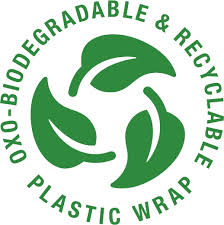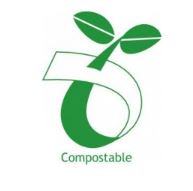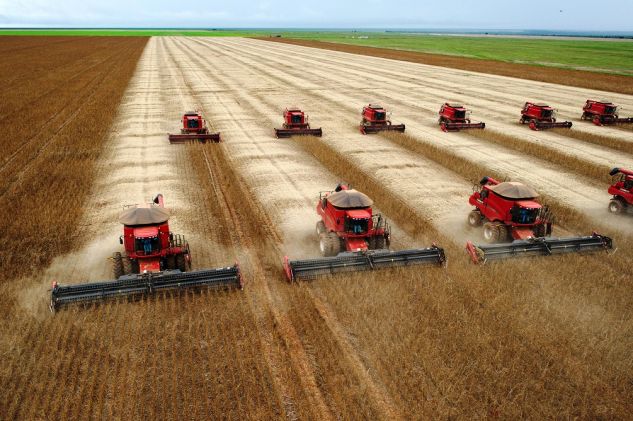Between 1950 and 2017, 9.2 billion tons of plastic were manufactured worldwide according to the IUCN. Industry, agriculture, clothing, medical equipment, utensils, computer equipment, toys, packaging: plastic is found in many objects. In 2018, more than 1.130 billion mainly plastic packaging items were produced in the European Union alone.
But plastics have a deleterious effect on the environment and potentially harmful to our health. Of the 120 species of marine mammals on the IUCN Red List of Threatened Species, 54 consume plastic waste or get stuck in it. This is just one example of the impacts plastic has on our environment. To remedy this, more and more professionals and individuals are turning to bioplastics, which are seen as an ecological alternative to plastic while possessing its advantages.
Bioplastics are often presented as an alternative to conventional and polluting plastic. However, they are not as ecological as they seem...
Bioplastic does not mean “ecological plastic”. It can pose all the environmental problems related to plastics and even raise new questions.

What is bioplastic?
Bioplastic is a general term. In reality, there are 3 types of bioplastics:
Biobased plastics
Bio-based plastics are wholly or partly composed of natural, renewable and often agricultural materials. They are polymers (i.e. sets of long molecules) produced from starch, sucrose or vegetable oils. For example, PLA (polylactic acid) is obtained by the fermentation of sucrose or by the hydrolysis of starch. Another example, the natural rubber found in some tires is made from rubber tree sap. Conventional plastics can also include materials of plant origin, such as PET (poly-ethylene terephthalate) which can contain up to 30%.
The origin of the biomass of this plastic is important. If it comes from specific crops or forests, it risks competing with food production. For example, if we grow corn with the aim of making bioplastics, that is as much agricultural land not available to grow food to feed us.
Bioplastics can also be made from organic waste or “residues” (food waste, uneaten parts of vegetables, various wood waste, etc.) or even with above-ground cultures of algae, mushrooms, etc.
biodegradable plastics
According to the European Union standard EN 13432, a material is considered biodegradable if it degrades to 90% within 6 months. It must also reach a high level of disintegration, have a low concentration of heavy metals and fluorine and not have a negative effect on the ecosystem but the reality is different. Not all bioplastics (plastics derived partly or entirely from biomass) are biodegradable, and some biodegradable plastics are fully petroleum based. In addition, it produces, as it degrades, a compost rich in nutrients useful to plants. But not all biobased plastics are necessarily biodegradable. Indeed, only 40% of biobased plastics are biodegradable . Other cases create micro and nanoparticles of plastic who will be assimilate by the organisms and cells.
oxo-degradable plastics 
Oxoplastics or oxodegradable plastics are traditional plastics that contain additives intended to accelerate the fragmentation of the material into very small pieces, under the effect of ultraviolet radiation or heat. As a result of these additives, the plastic eventually breaks down into plastic particles and then into microplastics which exhibit properties similar to those of microplastics resulting from the fragmentation of traditional plastics.
France has, moreover, banned the use of oxo-fragmentable plastic bags since 2015 and extended this ban to all oxo-fragmentable plastic products in January 2021. Banned to use but not banned to produce. So in France we can produce prohibited plastic to sell in others countries.

How does a plastic degrade?
The degradation of plastic (polymer = large molecule) is a slow process (we are talking about several tens or even hundreds of years) and normally faster for bioplastics. The plastic is first damaged by heat, humidity, shocks before being really attacked by micro-organisms such as bacteria (which have more difficulty attacking an entire bottle than parts of the bottle).
More specifically, we distinguish:
Fragmentation. It is strongly favored by UV. This is the phenomenon observed on beaches and on the surface of the oceans where plastics become micro-fragments. On the other hand, once they find themselves in the bottom of the oceans, covered by sediments, they hardly degrade anymore (case of PE, PET, PVC, etc.). In addition, certain additives added to plastics limit fragmentation.
Biodegradation: under the action of micro-organisms (bacteria, enzymes, etc.), the polymer ultimately becomes carbon, hydrogen and oxygen. Biodegradation is highly dependent on the plastic and the medium in which it decomposes.

Bioplastics: good or not?
A bioplastic can be biodegradable but made from petroleum. Conversely, it can be of vegetable origin but not biodegradable. In fact, a bioplastic, whether synthesized from biomass or petroleum, remains a plastic resin. We can very well synthesize, from plants, a plastic identical to that made from petroleum. And the degradation in micro particles is still a problem
Bio-based plastics do not really solve the toxicity or waste management problems posed by conventional plastics.
Biodegradable plastics are biodegradable only under certain conditions. Often, they degrade less well in real conditions than in the laboratory. Particularly when they end up in the sea, an environment where the conditions are not met for good degradation.
We have the illusion that it is not a concern to throw bioplastics into the environment. However, in any case, you should never leave a biodegradable, compostable or biosourced plastic in nature because they are not really compostable unless they are in laboratory and specific conditions.

We tend to forget that using disposable products is a huge waste, even when they are made of bioplastic.
Finally just a dream (green) washing?
Land use
A study by the German Federal Environment Agency showed that bioplastics did not have a better impact on the environment than conventional plastics. Their carbon impact is certainly lower, but they have a greater ecological impact. It is the cultivation and processing of the plants necessary for the manufacture of bioplastics that are particularly at issue. Bio-based plastics are mainly made from sugar cane, corn or potato. According to the Plastic Atlas, it takes 2.39 tons of corn, 0.37 hectares of land and 2921 m3 of water to make one ton of PLA. The use of fertilizers or even GMOs to cultivate these plants is responsible for the eutrophication of aquatic environments and the acidification of soils, to a greater extent than those generated by the manufacture of conventional plastics.

Toxic compounds in bioplastic
Bioplastic is often presented as harmless to human health. However, a study conducted by German and Norwegian researchers on 43 bioplastic products, showed that they were as toxic as conventional plastics. The tests carried out in vitro (on cells and not on animals) showed that two thirds of the products tested induced sufficient toxicity to disrupt cell functioning. Bioplastics are therefore far from being benign for our health.
This chemical compounds, by Assimilation and accumulation of degradation products in organisms, can cross extra and intracellular environment and can become cancerigen, mutagen and reprotoxic (CMR).

Conclusion
Bioplastic is far from being the promised miracle solution. Throughout its life cycle, it generates environmental impacts that are just as harmful as its conventional counterpart. With an additional risk, however, by dint of presenting it as ecological and without risk to the environment, bioplastic could well generate a rebound effect and slow down our efforts to reduce our plastic production. Because this is the main strategy to adopt.
Most bioplastics are only degradable under specific conditions in an industrial environnement so in natural environment it is quite different and plastic accumulates and pollute.
If Industries want just biobased plastic the consequence about deforestation for culture, soil pollution and impoverishement by chemical products , ocean acidification will be important because of the necessity to produce industrially the biomasse will be considerable if we still continue to use and produce plastic like that.
Of course, plastic has advantages that we would sometimes find difficult to do without, especially in the medical field.
But today, if we want our recycling cycle to work, we have to unclog the system by drastically reducing the production of all plastics.
This will clean, treat and depollute plastic and plastic-polluted areas more effectively and not clog them even more.
We have enough plastic trash to treat to reuse so dont need to produce more.
Do not forget that in the world only 20% of all waste combined is recycled and in this figure we count recycling "storage" which only postpones the deadline of the problem.
One major problem who touch all the biosphere is the degradation process create micro particles and nano particles who will releaae chemical product in soil, water, air and cells by molecular assimilation.
The best solution should therefore come from manufacturers and politicians to considerably reduce the production of all types of plastic. Because the various labels, the various new ecoplastics developed by industries are only a diversion from the initial goal which is to reduce the production of plastic and not to continue to produce more, pollute more and get richer by creating solutions that do not. are not
Politicians should put more rigor in their political and civic fight by enacting clear and effective laws and not play on words to always leave the opportunity to industrialists to turn away from their duty. ( law: ban using plastic...but not... ban produce plastic. They can continue to produce prohibited plastic to sell in others countries). (law against single use plastic... Industries just change the name of products from signle use to reuse but its exactly the same products)
When I see all the work done on a daily basis by each of you, ordinary citizen, to put your stone to the building, our leaders and industries can only take example from each of you. It is time for them to review their priorities and a whole system of production and consumption.
People are afraid of change because the system push everybody to buy to be happy and for them it is probably losing something or a landmark but on the contrary, change it is gaining in balance, comfort and health.
To change we need to take the problem to the root.
Below various plastics sample including bio base and biodegradable after one year in compost from NATUREMIND-ED



Guillaume lebout
Sources:
Atlas du plastique
https://ag.tennessee.edu/biodegradablemulch/Documents/oxo%20plastics.pdf
https://ifremer.fr/
https://doi.org/10.1002/anie.201805766
https://news.climate.columbia.edu/2017/12/13/the-truth-about-bioplastics/?fbclid=IwAR3c5jPjPJPHjqx5mfhPuHsrqgA3f3RYmOWqBnlWYDIQetYnGSbvAtwgIMM